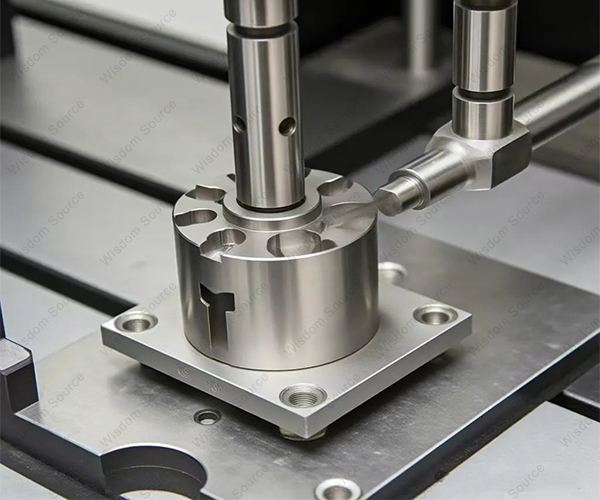Overcoming The Problems Of Titanium Alloy Processing: A Guide To The Selection Of Three Tool Materials
Overcoming The Problems Of Titanium Alloy Processing: A Guide To The Selection Of Three Tool Materials
Although titanium alloy is known as an “all-around metal”, its processing process
can be called a “tool killer”-low
thermal conductivity leads to the accumulation of cutting heat, high chemical
activity and easy reaction with the tool material, the slightest carelessness
can cause sticking knives, chipping and other problems. How to choose a
matching tool material? This article combines the latest industry practices to
analyze the selection logic of titanium alloy machining tools.
Titanium Alloy Processing Pain Points: Why
are ordinary knives “acclimatised”?
1. Sticking tool nightmare: Titanium alloy
will soften and stick to the tool above 200℃, and the
surface of CBN (cubic boron nitride) tool is easy to form titanium chip
deposits, resulting in a 30% surge in cutting force.%;
2. Chemical reaction trap: Diamond (PCD)
tools react with titanium carbonization at high temperature, the edge corrosion
rate reaches 0.15mm/hour, and the life span drops by 70%.%;
3. Thermal conductivity: The thermal
conductivity of titanium alloy is only 1/4 of that of steel, and the
temperature of the cutting area can reach 1000℃, which
accelerates tool wear.
Tool Material Optimization Scheme: Comparison of three types of technical routes
① Cented Carbide Tools (mainstream choice)
Advantages: Good toughness, low cost,
suitable for intermittent cutting;
Upgrade Direction: The use of ultra-fine
grain (below 0.5µm) matrix, with high cobalt content (10%-12%) to improve
impact resistance;
Data: When processing Ti6Al4V, the cutting
speed can reach 60-120m/min, and the tool life is 5 times higher than that of
traditional high-speed steel.
② Physical Coating Cemented Carbide (balanced
performance)
Coating technology: TiAlN/AlCrN multi-layer
composite coating, hardness up to HV3500, heat resistance exceeding 900℃;
Effect: Compared with un-coated tools, the
adhesion rate is reduced by 50%, and the roughness of the machining surface is
Ra≤0.8µm.;
Case Study: After an aerospace parts
factory adopts coated tools, the processing efficiency of titanium alloy
impellers is increased by 40%.

Ceramic Tools (High-Speed Finishing)
Applicable Scenarios: continuous cutting,
semi-finishing stage;
Risk Warning: The bending strength is only
800-1200MPa, and vibration and shock loads need to be avoided.;
Innovative solution: Tungsten carbide
particles are added to the silicon nitride ceramic (Si3N4) matrix, and the
fracture toughness is increased to 8Mpa·m^1/2.
Practical Skills: parameter optimization and process design
1. Golden combination of cutting parameters
Roughing: vc=30-60m/min, fz=0.1-0.2mm/z,
ap=2-5m
Finishing: vc=80-150m/min, fz=0.05-0.1mm/z,
ap=0.1-0.5mm
2. Cooling strategy: High-pressure internal
cooling (pressure≥7MPa) with oil-based cutting fluid
can reduce the cutting temperature by 40%;
3. Tool maintenance: Ultrasonic cleaning is
used every 50 minutes of processing to remove the adhesion of titanium shavings
and extend the life of the coating by 30%.
Future trend: Adaptive smart tools The
smart tools unveiled at the EMO exhibition in Germany in 2025 have integrated
temperature/vibration sensors, which can adjust cutting parameters in real
time. Experimental data show that the efficiency fluctuation range of such
tools is reduced to ±5% when machining titanium alloys,
and the tool life prediction accuracy is 90%.
The choice of titanium alloy processing tools needs to follow the three principles of “anti-stick, heat-resistant, and toughness”. Cemented carbide is still the first choice for cost performance. Breakthroughs in coating technology have brought about performance leaps, and smart tools may become the next-generation solution.
